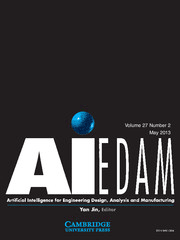
AI EDAM-ARTIFICIAL INTELLIGENCE FOR ENGINEERING DESIGN ANALYSIS AND MANUFACTURING
Scope & Guideline
Bridging Engineering and AI for a Smarter Tomorrow
Introduction
Aims and Scopes
- Artificial Intelligence in Engineering Design:
The journal emphasizes the integration of AI techniques, including machine learning and reinforcement learning, to enhance various stages of engineering design, from conceptualization to detailed design and manufacturing. - Human-Robot Collaboration:
Research on human-robot interaction, particularly in collaborative tasks such as disassembly and assembly, is a key focus area, aiming to improve efficiency and safety in engineering processes. - User Experience and Cognitive Factors:
The journal publishes studies that explore the relationship between user experience, cognitive processes, and design, contributing to the development of user-centered design methodologies. - Data-Driven Design and Manufacturing:
There is a consistent emphasis on the use of data-driven approaches, including ontology-based methods and machine learning algorithms, to optimize design processes and improve manufacturing outcomes. - Sustainable and Intelligent Manufacturing:
Research related to sustainability in manufacturing, including predictive maintenance and intelligent systems for resource allocation, highlights the journal's commitment to addressing contemporary challenges in the engineering field.
Trending and Emerging
- Augmented Reality in Design:
Recent papers highlight the use of augmented reality in collaborative design processes, suggesting its growing importance for enhancing interaction and efficiency in engineering tasks. - Machine Learning Applications:
There is an increasing trend in applying machine learning techniques across various engineering domains, particularly for predictive analysis and optimization in manufacturing processes. - Interdisciplinary Approaches:
Emerging research emphasizes the intersection of cognitive science and engineering design, exploring how psychological factors influence creativity and decision-making in design projects. - Ontology and Semantic Methods:
The application of ontological frameworks to improve design processes and knowledge management is gaining traction, indicating a shift towards more structured and systematic approaches in engineering design. - Sustainability and Eco-Design:
A rising interest in sustainable design practices and methodologies that incorporate eco-friendly considerations into the engineering process is evident, reflecting broader societal trends towards sustainability.
Declining or Waning
- Traditional Manufacturing Techniques:
Research focusing solely on conventional manufacturing processes without the integration of AI or data-driven methodologies has decreased, reflecting a shift towards more advanced, intelligent systems. - Basic Design Methods:
Papers centered on traditional design methodologies lacking AI integration are becoming less common, as there is a growing preference for innovative approaches that leverage modern technologies. - General Literature Reviews:
While literature reviews remain important, there appears to be a decline in publications that do not offer novel insights or methodologies, suggesting a trend towards more application-focused research.
Similar Journals
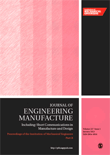
PROCEEDINGS OF THE INSTITUTION OF MECHANICAL ENGINEERS PART B-JOURNAL OF ENGINEERING MANUFACTURE
Shaping Tomorrow's Engineering Landscape TodayPROCEEDINGS OF THE INSTITUTION OF MECHANICAL ENGINEERS PART B-JOURNAL OF ENGINEERING MANUFACTURE, published by SAGE PUBLICATIONS LTD, stands as a vital academic journal in the realms of Industrial and Manufacturing Engineering and Mechanical Engineering. With a dedicated focus on innovative research and practical applications, this journal serves as a key resource for engineers, researchers, and students alike, aiming to advance the field through the dissemination of high-quality, peer-reviewed articles. Operating from the heart of the United Kingdom, the journal boasts a commendable Q2 quartile ranking in both categories as of 2023, underscoring its significance and influence within the engineering community. As it converges knowledge from 1983 to 2024, the journal continues to capture cutting-edge studies and revolutionary methodologies that shape the future of engineering manufacturing. Despite not being an Open Access publication, it remains easily accessible through numerous academic databases, ensuring that vital research reaches its intended audience. Engage with the latest developments and contribute to the vibrant discourse in engineering manufacture by exploring the groundbreaking insights published in this esteemed journal.

JOURNAL OF INTELLIGENT MANUFACTURING
Transforming Industry with AI-Driven SolutionsWelcome to the JOURNAL OF INTELLIGENT MANUFACTURING, an esteemed publication founded in 1990 and based in the Netherlands, published by Springer. With an impressive impact factor placing it within the Q1 category for fields such as Artificial Intelligence, Industrial and Manufacturing Engineering, and Software, this journal stands out as a leading resource for researchers, professionals, and students alike. Its rigorous peer-reviewed articles delve into innovative methodologies and cutting-edge technologies driving the future of manufacturing and AI, offering substantial insights into industry trends and challenges. Indexed in Scopus, the JOURNAL OF INTELLIGENT MANUFACTURING consistently ranks among the top tier of its field, affirming its role as a vital platform for intellectual exchange. Enhance your research and professional knowledge by engaging with the latest findings and developments published here.

Machines
Pioneering advancements in mechanical and electrical engineering.Machines is a leading journal in the fields of engineering and computer science, published by MDPI in Switzerland since 2013. As an Open Access publication, it ensures that researchers, professionals, and students can freely access high-quality peer-reviewed research. The journal covers a diverse range of topics, including control and optimization, mechanical engineering, electrical engineering, and industrial manufacturing, boasting impressive rankings in various Scopus categories, such as Q2 in Computer Science and Control Systems Engineering. With a commitment to advancing knowledge and innovation in these critical areas, Machines serves as an essential platform for disseminating research findings and fostering collaboration within the academic community. By contributing to the ongoing dialogue in these dynamic fields, the journal plays a pivotal role in shaping the future of technology and engineering practices.

INTERNATIONAL JOURNAL OF COMPUTER INTEGRATED MANUFACTURING
Transforming Manufacturing with Cutting-Edge ResearchINTERNATIONAL JOURNAL OF COMPUTER INTEGRATED MANUFACTURING (ISSN: 0951-192X, E-ISSN: 1362-3052), published by Taylor & Francis Ltd, stands as a leading platform in the realm of manufacturing technologies and automated systems. With a distinguished reputation reflected in its Q1 rankings across multiple engineering categories—including Aerospace Engineering and Industrial and Manufacturing Engineering—this journal plays a pivotal role in advancing the discourse on computer-integrated manufacturing processes, automation, and system interoperability. The journal's impact is underscored by its strong performance, ranking in the top tiers of Scopus, notably placing 64th in Mechanical Engineering. Aimed at fostering innovation and collaboration among researchers, professionals, and students, the journal encourages the dissemination of cutting-edge research that bridges the gap between academia and industry. By facilitating open access to groundbreaking findings and discussions, INTERNATIONAL JOURNAL OF COMPUTER INTEGRATED MANUFACTURING not only contributes to the academic community but also plays a vital role in shaping the future of manufacturing technologies.

Journal of Industrial Information Integration
Transforming Industry Through Innovative InsightsThe Journal of Industrial Information Integration, published by Elsevier, stands at the forefront of scholarly research in the fields of Industrial and Manufacturing Engineering and Information Systems and Management. With an ISSN of 2467-964X and an E-ISSN of 2452-414X, this esteemed journal provides a vital platform for disseminating innovative findings that bridge the gap between industry and academia. It is a recognized leader in its category, boasting a Q1 Quartile ranking in both relevant fields, reflecting its high-impact scholarly contributions. Notably, it ranks 3rd out of 148 in Decision Sciences and 7th out of 384 in Engineering disciplines on the Scopus rank, highlighting its significant influence within the research community. Researchers, professionals, and students engaged in the transformation of industrial practices through information integration will find this journal indispensable for accessing cutting-edge studies, methodologies, and case analyses. Operating under a closed access model, the journal also encourages submission of articles that contribute to advancing the theoretical and practical understanding of integrated industrial information systems, thus fostering innovation and progressive thinking in the field.
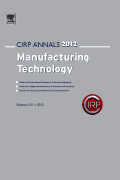
CIRP ANNALS-MANUFACTURING TECHNOLOGY
Transforming Ideas into Manufacturing SolutionsCIRP ANNALS-MANUFACTURING TECHNOLOGY is a prestigious journal published by Elsevier, dedicated to advancing the fields of Industrial and Manufacturing Engineering and Mechanical Engineering. With an impressive impact factor placing it in the Q1 category for both disciplines, this journal showcases cutting-edge research that drives innovation and technological advancements in manufacturing processes and systems. Despite not being an open access journal, it is widely recognized for its rigorous peer-review process and high-quality content, including original research articles, reviews, and case studies that are essential for professionals, researchers, and students alike. The journal's long history since its inception in 1964 underlines its ongoing commitment to contributing significant knowledge in manufacturing technology. Its relevance is further emphasized by its strong Scopus rankings, placing it in the top percentiles of its categories, ensuring that it serves as a critical resource for anyone looking to stay ahead in the ever-evolving landscape of manufacturing technology.
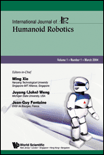
International Journal of Humanoid Robotics
Unveiling the Potential of Humanoid InnovationInternational Journal of Humanoid Robotics, published by World Scientific Publishing Co Pte Ltd, is a leading platform for researchers and practitioners in the fields of artificial intelligence and mechanical engineering. With an ISSN of 0219-8436 and an E-ISSN of 1793-6942, this journal has established itself as a significant resource since its inception in 2004. Spanning various topics from robotic design and control to human-robot interaction, it serves a diverse interdisciplinary audience. The journal’s impressive ranking in the Scopus database, positioned in the third quartile for both categories in 2023, reflects its growing impact in the academic community. Although not open access, the journal provides crucial insights that advance the understanding of humanoid robotics and foster innovative solutions to real-world challenges. Researchers, professionals, and students are encouraged to engage with this essential resource as it continues to shape the future of robotics through rigorous scientific inquiry and scholarly collaboration.
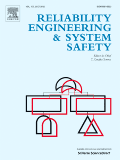
RELIABILITY ENGINEERING & SYSTEM SAFETY
Exploring the Intersection of Reliability and Quality.RELIABILITY ENGINEERING & SYSTEM SAFETY is a leading interdisciplinary journal published by Elsevier Sci Ltd, dedicated to advancing knowledge in the fields of applied mathematics, industrial and manufacturing engineering, and safety, risk, reliability, and quality. With a significant presence since its inception in 1983, this esteemed journal, identifiable by ISSN 0951-8320 and E-ISSN 1879-0836, holds an impressive impact factor and ranks in the top quartile (Q1) of its categories according to the most recent metrics. Specifically, it has achieved remarkable standings in Scopus, ranking #3 out of 207 in Safety, Risk, Reliability and Quality, marking it in the 98th percentile, and #21 out of 384 in Industrial and Manufacturing Engineering, at the 94th percentile. This distinction underscores the journal's vital role in shaping research and innovation in its fields. While it does not operate under an open access model, RELIABILITY ENGINEERING & SYSTEM SAFETY remains an essential resource for researchers, professionals, and students, aiming to publish high-quality articles that facilitate the understanding and application of reliability engineering and systemic safety within various industrial contexts. Stay ahead in cutting-edge research by engaging with the latest articles and findings from this influential journal.

Engineering Journal-Thailand
Connecting researchers to contemporary engineering challenges.Engineering Journal-Thailand, published by Chulalongkorn University, Faculty of Engineering, is a prominent academic journal dedicated to advancing knowledge and research in the diverse field of engineering. With an ISSN of 0125-8281 and an unwavering commitment to quality, the journal has established a substantial presence in the academic community since its inception in 2009. As of 2023, it is ranked in the Q3 category for Engineering (miscellaneous) and has achieved a Scopus rank of 137 out of 307, placing it in the 55th percentile of general engineering journals. Although it operates without open access, its impact within the engineering domain is significant, providing a vital platform for researchers, professionals, and students to disseminate their findings and engage with contemporary engineering challenges. The journal serves as a vital resource for those seeking to stay at the forefront of engineering innovation and contributes to the global discourse by bridging local insights with international perspectives.

Dyna
Advancing engineering knowledge for a dynamic future.Dyna, with the ISSN 0012-7361 and E-ISSN 1989-1490, is a prominent academic journal published by the Federación Asociaciones Ingenieros Industriales España. Situated in Spain, it is dedicated to advancing knowledge and research in the field of engineering, specifically focusing on diverse aspects within the Engineering (Miscellaneous) category. With a current Scopus rank of #245 out of 307, Dyna operates in the 20th percentile, emphasizing the journal’s commitment to fostering innovation and dialogue among scholars and industry practitioners alike. Although it operates under traditional access models, the journal is pivotal for researchers, professionals, and students seeking to contribute to the evolving landscape of engineering disciplines. Covering a broad range of topics from 2009 to 2024, Dyna aims to facilitate interdisciplinary collaboration and disseminate cutting-edge findings that can influence both academia and industry.